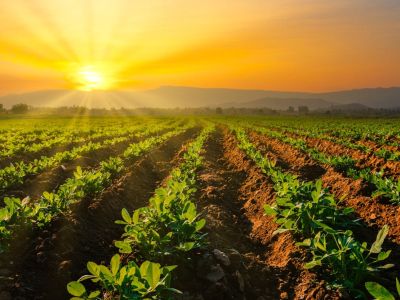The sturdy little plant then marches to its own drum. Yellow flowers appear and wither, producing surprising flower stalks, or pegs. These cool little structures lengthen on the stem, growing downward. Upon arrival, the peg pushes the flower’s ovary (pistil) an inch or two (2.5-5 cm.) deep into the soil. There the ovary ripens, growing into the pod with the peanuts (seeds) inside. In order to achieve this feat, though, certain peanut water requirements must be met. So how much water does a peanut plant need and when? Read on to learn more.
When to Water a Peanut Plant
Water your peanut plant when the soil appears to start drying out. You may need to water up to two to four times weekly, depending upon your local weather conditions and rainfall amounts. Consider other garden vegetable plants in answer to the question, “how much water does a peanut plant need?” Peanut water requirements are similar to those of most common garden varieties. These plants typically need about one inch (2.5 cm.) of water, including rainfall and watering on your part, each week during their particular growing season. Watering peanut plants is typically hit-or-miss during much of the growing season. However, growth, flowering, and peanut pod development all depend upon abundant moisture. Too dry growing conditions during these critical periods will decrease the size of your harvest significantly and jeopardize your plant’s health. Peanut plants need plenty of water from the time they begin to bloom until the pegs have all completely burrowed into the soil. Look for your first flowers to appear somewhere between 25 and 40 days after planting. From blooming until harvest, take care to not let your peanut plant dry out. When the plant’s leaves begin turning yellow in the fall, it’s time to stop watering completely. Leaf yellowing is the signal that all your hard work will soon pay off. Your peanut harvest is now 10 to 14 days away.
Watering Peanut Plants
The home gardener’s best friend is a plastic perforated “soaker” hose. The advantages of “drip” irrigation include placing water at the base of your plants where it’s needed – not out in the middle of the yard. Drip irrigation cuts water usage by at least half, allows you to water large gardening areas at the same time, and lends itself perfectly to peanut plant watering. You’ll also love being able to walk away from the irrigation task to perform other duties simultaneously. Maybe the most beneficial to your peanut plant itself, drip irrigation keeps the water at the root zone and not on the leaves. Wet foliage enables mildew invasions. Beautiful in its simplicity, the soaker hose is a snap to use for peanut irrigation – just place it alongside your plants with the holes pointing upward. Turn on the water source and adjust so that the holes deliver a slow trickle of water to your plants with the soil absorbing the water completely. You may turn it up slightly and check several times as long as the water is not running off. Check often and turn off the water source when runoff begins to occur.
